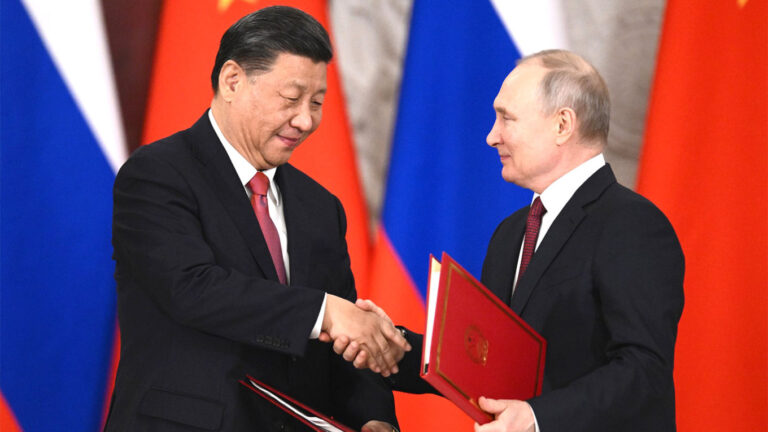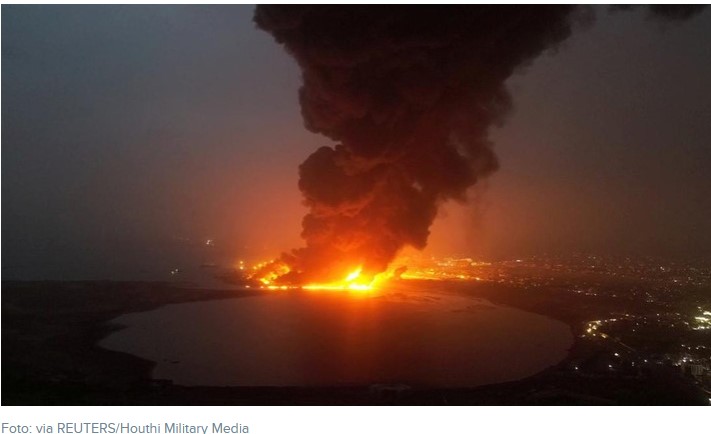
STRATEGIC ASSESSMENT. The attack has been attributed to Islamic State Khorasan Province (IS-K), a regional faction of Islamic State (ISIS). However, the four individuals accused of executing this assault are Tajik nationals purportedly under IS-K’s command. Tajikistan and other countries in Central Asia have become major recruitment areas for IS-K. In Tajikistan, militants frequently emerge from the ranks of migrant workers in Russia, who often face discrimination abroad, as well as from impoverished local communities. While IS-K’s recruitment efforts are primarily focused on Central Asia, the continuous risk of radicalization in the North Caucasus, especially within the Russian Republics of Chechnya, Dagestan, and Ingushetia, has been somewhat underestimated recently.
Before the Crocus City Hall incident, individuals from the North Caucasus were the main perpetrators of terrorist attacks in Russia. They constituted a significant portion of Islamic State’s forces in Syria less than a decade ago. Russian was the second most common language taught in Islamic State schools during the peak of its so-called caliphate. Although the security situation in the region has since improved, incidents of violent extremism within domestic borders and attacks by North Caucasian individuals in Europe are still prevalent. While attacks have been comparatively low in Ingushetia in 2023, regional authorities have still stated that they are grappling with extremist violence and terrorist acts, positioning it as the most impacted Northern Caucasian republic. There have been various targeted attacks on law enforcement, police forces, and other security personnel. That same year, there was an assault on an Ingush traffic police outpost that killed several police officers. Issues of radicalization and violence continue to pose serious concerns in the North Caucasus and among the diaspora, notably among the younger population whose formative years were shaped by the First Chechen War (1994-1996) and the Second Chechen War (1999-2009) with Russia, a post-Soviet separatist conflict.
Jihadists arrived in Chechnya toward the end of the First Chechen War, shifting the nature of the conflict and setting the stage for the next decade. The Second Chechen War saw local separatists lose almost complete influence to jihadist elements, with the struggle against Russian control gaining a broader, universal jihadist dimension. In later years, the conflict extended beyond Chechnya, influencing jihadist movements regionally, inspiring extremism and radicalization in Dagestan and Ingushetia, and leading to notable terrorist attacks in Russia. In 2013, the death of a prominent Chechen rebel Dokka Umarov, the creator of the North Caucasian jihadist movement “Caucasian Emirate”, coupled with the rise of Islamic State, led many North Caucasians to join the global jihadist movement, reflecting the transformation of the Caucasian insurgency into a transnational phenomenon. While Russia crushed the separatist movements, the broader jihadist elements are still prevalent in the region.
Russia’s scorched earth counterinsurgency campaign across the North Caucasus, but especially in Chechnya, has been extreme, with widespread reports of human rights abuses such as torture, summary executions, and hostage-taking, under the policy of collective responsibility implemented by Chechen leader Ramzan Kadyrov. This policy holds families and relatives of insurgents accountable, resulting in reported abuses by security forces not just in Chechnya but abroad. In 2019, a Chechen separatist was shot dead in Germany by a Russian operative. In 2020, a Kadyrov critic was found murdered in France. In 2022, another critic of the Chechen leader survived an assassination attempt in Sweden. These crackdowns, while quelling domestic violence in the past decade, are believed to have only further radicalized jihadists and their supporters. Russian special services regularly report on these anti-terrorism measures, indicating Moscow’s concern about regional security risks.
However, the transnational violence is not limited to the alleged attempts of the Russian or Chechen government to silence dissidents in Europe. In recent years, diaspora members from the North Caucasus have been implicated in terrorist activities across Europe. In 2020, a Chechen teenager and his associates beheaded a French secondary school teacher. In 2023, a 20-year-old Ingush man, after proclaiming loyalty to Islamic State, stabbed a teacher to death and injured three students in France. In the same year, Belgian authorities arrested seven men, almost all of them Chechens, for their alleged connections to ISIS. Although Caucasian migrant communities are largely insular, some younger individuals have begun to interact and form connections with radicals from various backgrounds through online channels. While platforms like Telegram can facilitate broader radicalization among Islamic extremists, newer platforms connected to the Caucasian Emirate, which declined during the conflict in Syria but has been rumored to have enjoyed a recent resurgence, are also becoming more attractive to North Caucasian youth. Digital platforms like “KavkazCenter.org” and “ChechenInfo” have been recognized as the information agency of the current Caucasian Emirate. They disseminate propaganda videos that focus on the jihadist element in the North Caucasus, resistance against the Russian Federation, and the involvement of North Caucasian fighters in the Ukraine conflict, which has also served as a radicalizing factor in recent years. In 2023, Russian authorities arrested a 23-year-old Ingush who was accused of distributing information on and justifying the activities of the Caucasian Emirate on “VKontakte,” a Russian social media site.
Growing discontent among North Caucasian youth cannot be solely attributed to aggressive online propaganda. Persecution of Muslims in the region has caused the ideas of the Caucasian Emirate and ISIS to resonate strongly in the region. In 1999, Wahhabism, an austere strand of Sunni Islam, was banned in Dagestan, where Russian persecution of Muslims has been among the most extreme. In 2016, A popular Salafi imam, for example, was reportedly tortured and imprisoned in a penal colony for “justifying jihadi violence” even though he had faced threats years prior from Dagestani militants for condemning ISIS. Months later, two young boys were killed by a Dagestani official – they were allegedly mistaken for insurgents. Polls from 2019 revealed that 14.5 percent of high school students and 9 percent of teachers in Dagestan showed support for compatriots who joined ISIS. Given the legal risks in Russia for endorsing ISIS, a banned organization since 2014, it is likely that the actual number of sympathizers in Dagestan is significantly higher than reported. However, the persecution of Muslims in the North Caucasus, particularly by Russia, is not limited to Dagestan. This played a large factor in the radicalization of individuals across the region. With the Syrian conflict in somewhat of a stalemate, the return of ISIS foreign fighters could strengthen the influence of radical groups like the Caucasian Emirate in the region, especially considering the heavy-handed approach from regional authorities. Such an influx, combined with the severe counter-insurgency tactics employed by Russian and regional governments, is expected to exacerbate the problem.





